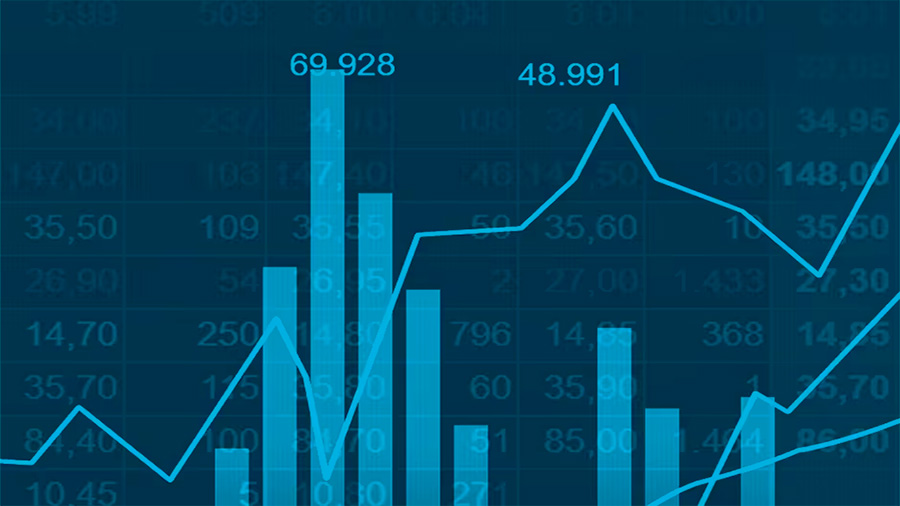Effective counterparty risk management is crucial for financial institutions to ensure stability and profitability. Real-time exposure monitoring allows for immediate detection of payment failures, enabling proactive risk mitigation. Integrating XVA into risk management provides a comprehensive view of various adjustments, such as CVA, FVA, and KVA, enhancing decision-making and compliance. Advanced techniques, including Credit Value at Risk (CVaR), credit scoring, and machine learning, offer deeper insights into credit risk across portfolios. Historical data and predictive analytics further improve risk models by identifying patterns and forecasting potential future risks. By leveraging these strategies and tools, institutions can optimize their counterparty risk management and safeguard their financial health.
How Does Real-Time Exposure Monitoring Impact Counterparty Risk Mitigation?
Real-time exposure monitoring significantly improves counterparty risk mitigation by allowing you to detect payment failures immediately. This timely insight helps you avoid the risk of continuing transactions with failing counterparties, preventing financial, reputational, and regulatory repercussions.
You can act proactively with real-time data, making informed decisions like reducing exposure, renegotiating terms, or seeking alternative counterparts. Quick responses minimize potential losses and align your risk management processes with regulatory expectations.
Moreover, real-time monitoring enables you to maintain a complete, current picture of your entire counterparty ecosystem. By continuously assessing and monitoring counterparties, you control and mitigate risks effectively, protecting your financial stability and operational efficiency.
Lastly, leveraging real-time exposure monitoring empowers you to detect issues promptly, take informed actions, and maintain a holistic view of your counterparty landscape.

What Are The Regulatory Requirements For Internal Counterparty Risk Models?
To comply with regulatory requirements for internal counterparty risk models, you need to follow the guidelines set by the European Central Bank (ECB) and other regulatory bodies.
- Align with ECB Guidelines: Make sure your models align with the ECB Guide to Internal Models and Regulation (EU) No 575/2013. This includes governance, validation, and audit standards specifically for credit risk, market risk, and counterparty credit risk. The ECB’s Targeted Review of Internal Models (TRIM) will assess your compliance with CRR, CRD IV, and EBA RTS guidelines.
- Adhere to Basel III: Ensure your internal models comply with the Internal Model Method (IMM) and the Standardised Approach for Counterparty Credit Risk (SA-CCR). Your models should ensure consistent and accurate calculation of risk-weighted assets to reduce unwarranted variability.
- Regular Review and Validation: Regularly review and validate your models to stay compliant with regulatory standards. Be prepared for ECB supervisory reviews, which will take your institution’s specificities into account.
- Stay Updated with Regulatory Changes: Stay updated with regulatory changes, such as the shift from IMM to SA-CCR, and adjust your models accordingly. Address gaps in regulation interpretations to align closely with future changes.
Finally, by following these steps, you ensure compliance and maintain robust counterparty risk management practices.
How Do Financial Institutions Integrate Xva Into Counterparty Risk Management?
How do financial institutions integrate XVA into counterparty risk management? You do this by adopting XVA desks and advanced technology solutions to monitor and manage various XVAs like Credit Valuation Adjustment (CVA), Funding Valuation Adjustment (FVA), and Capital Valuation Adjustment (KVA).
- Risk Sensitivities and Hedging: You can calculate the sensitivities of XVAs to market changes and hedge against these risks using tools like Monte Carlo simulations.
- Pre-Deal Analysis: Before finalizing deals, you should perform pre-deal XVA calculations to assess the impact on overall risk and profitability.
- Real-Time Risk Measures: Advanced platforms give you real-time analysis of counterparty risks, including Potential Future Exposure (PFE) and Expected Positive Exposure (EPE).
- Regulatory Calculations: Ensure compliance with standards like Basel III and IFRS 13 through precise, technology-driven XVA calculations.
- Integrated Systems: Use solutions from providers like S&P Global Market Intelligence and Quantifi to integrate trading, risk management, and accounting functions seamlessly.
In closing, by adopting these strategies, you can effectively manage counterparty risks, optimize trading strategies, and comply with regulatory demands.

What Advanced Techniques Are Used To Measure Credit Risk Across Portfolios?
You measure credit risk across portfolios using advanced techniques like Credit Scoring and Rating, Credit Value at Risk (CVaR), and Credit Spread Analysis.
- Credit Scoring and Rating: This helps you assign a numerical score or rating to each borrower based on their creditworthiness. This enables you to identify and quantify the credit risk of individual exposures and aggregate them to measure the credit risk of your portfolio.
- Credit Value at Risk (CVaR): CVaR estimates the maximum potential loss of a portfolio due to credit risk over a given time horizon and confidence level. You can use historical data, simulation methods, or analytical models to assess risks under different scenarios.
- Credit Spread Analysis: This looks at the difference between the yield of a risky asset and a risk-free asset. This helps you understand the compensation for bearing credit risk.
- Credit Portfolio Models: These consider correlations between different assets and capture the dynamic nature of credit risk. These models allow you to measure overall credit risk by accounting for interdependencies.
- Machine Learning and Artificial Intelligence: These can analyze large datasets, identify hidden patterns, and generate accurate risk predictions under varied scenarios.
- Alternative Data Sources: Use data like news media, social media, and third-party account data to enhance your credit risk analytics. These sources provide richer insights, especially for SMEs, enabling more accurate credit scoring and early warnings.
Overall, by employing these advanced techniques, you can thoroughly assess, monitor, and mitigate credit risk across your portfolio, leading to better decision-making and optimized risk-adjusted returns on capital.
How Do Historical Data And Predictive Analytics Improve Counterparty Risk Models?
Historical data and predictive analytics significantly enhance counterparty risk models by giving you a detailed view of past behaviors and projecting future risks.
By using historical data, you can identify patterns and trends that have led to defaults or credit risks. This will help you understand the conditions and signals that precede a default, enabling better risk assessment.
Predictive analytics takes it further. By using statistical models and machine learning, you can forecast future risks. Analyzing large datasets allows you to identify emerging risks before they become major problems. For instance, in credit risk analysis, predictive models can assess a borrower’s likelihood of default by examining their financial history and current trends.
Moreover, predictive analytics can optimize decision-making in real-time. You can adjust loan terms, require additional collateral, or take other proactive measures to mitigate risk. This dynamic approach ensures that your risk models are always up-to-date with the latest data, providing a more accurate risk assessment.
As a final point, using historical data and predictive analytics makes your counterparty risk models more robust and precise, allowing you to foresee and mitigate risks effectively.





